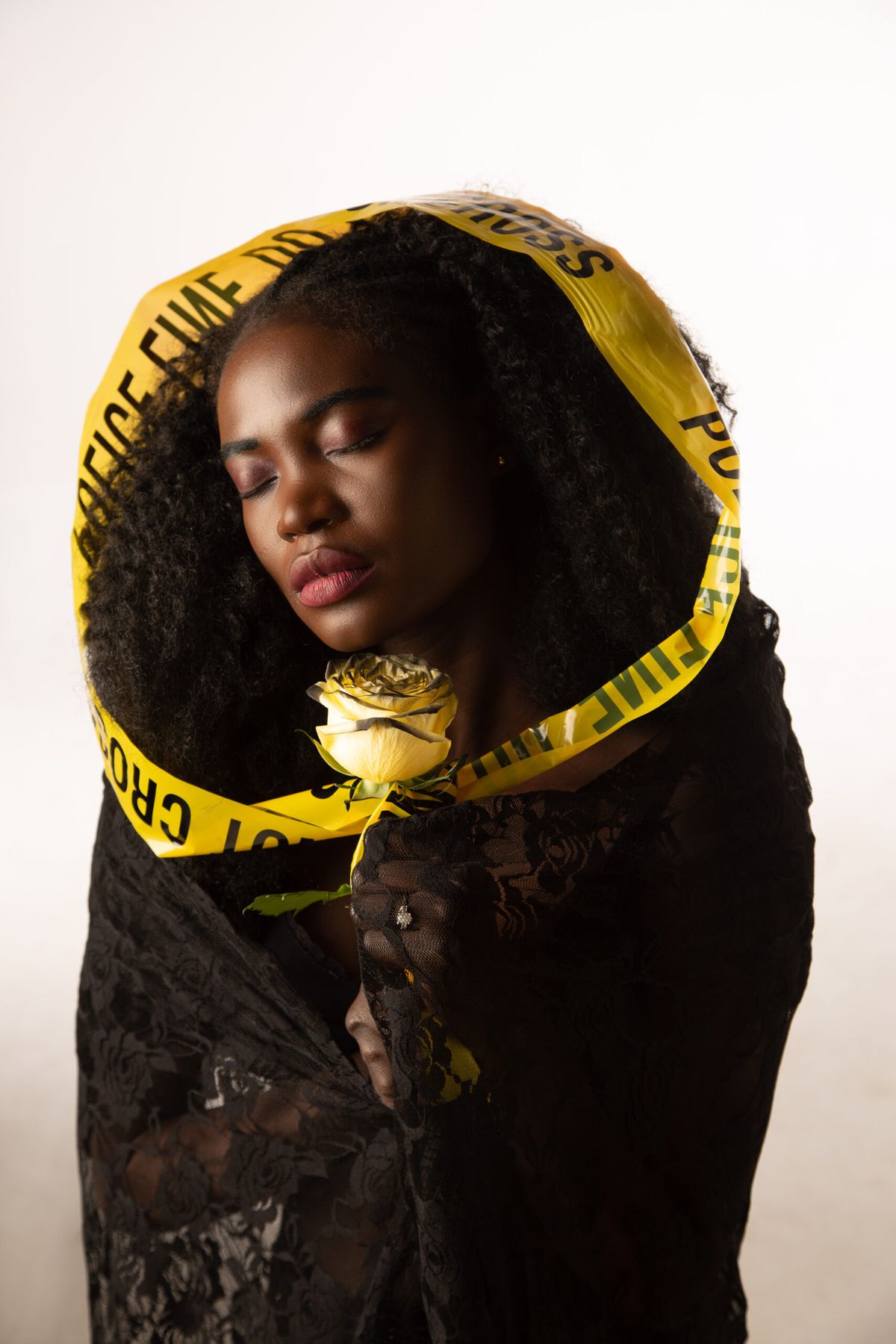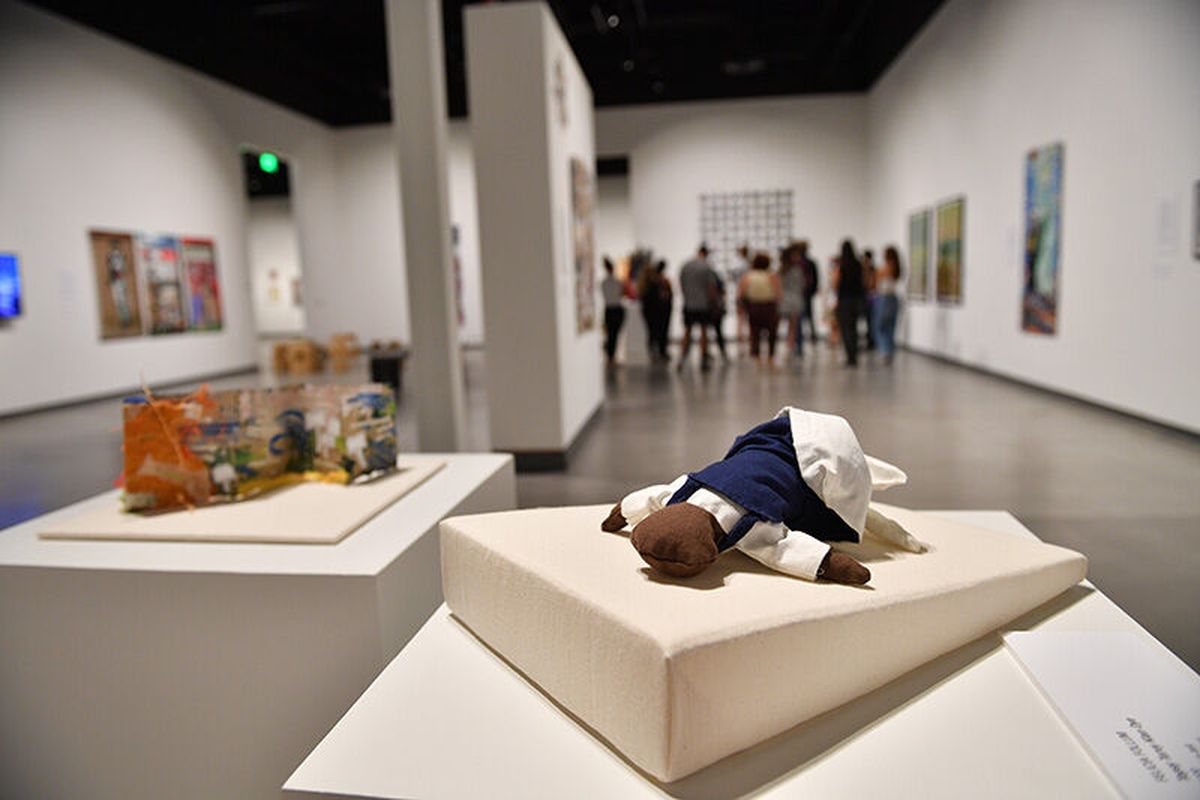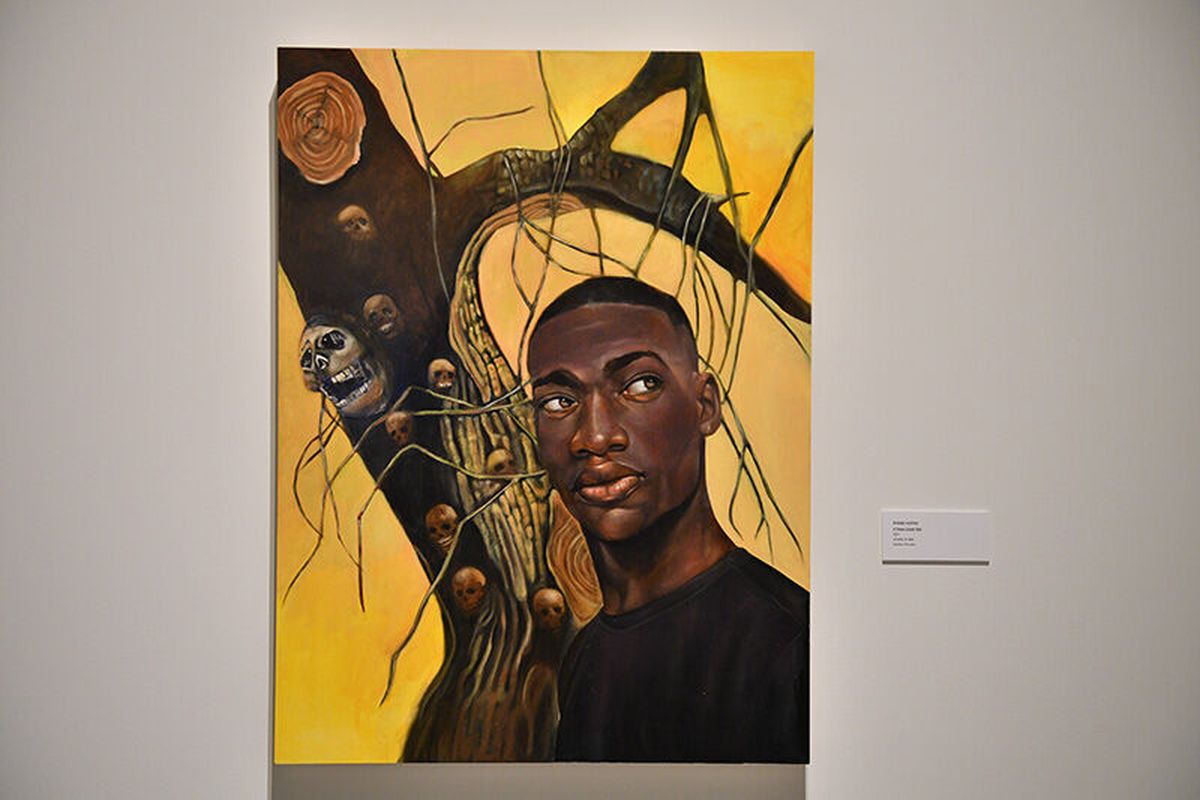‘Artists have always been chronicles of our time’: WSU’s Jordan Schnitzer Museum of Art debuts Black Lives Matter Artist Grant exhibit
Images of the Jordan Schnitzer Museum of Art's "Black Lives Matter: An Intergenerational Discussion," which features 20 artists who won $2,500 each through the Black Lives Matter Artist grant. (Shelly Hanks)
The Jordan Schnitzer Museum of Art hosted the “Black Lives Matter: An Intergenerational Discussion” on Wednesday at Washington State University’s Pullman campus.
The Black Lives Matter Artist Grant distributed $2,500 to 20 artists last December. The 20 artists created work to amplify the historical contexts and current issues surrounding racial equity.
Jordan Schnitzer, the donor of the program, was in attendance for the event. He has been a “champion for artists of color” for generations.
“Artists have always been chronicles of our time,” Schnitzer said. “Therefore, we came up with the idea of supporting grants for the Jordan Schnitzer Museum of Art to get artists of any color some money and have them interpret in their own way their issues. I’ve been deliciously overwhelmed with the submissions and the quality of the art.”
All of the artwork is related to the Black experience of surviving through white supremacist entities such as beauty, belonging, racial violence and the generational impact racism has had on Black life.
Different facets of Black art shined throughout the exhibit. Myron Curry is a portraitist who captures Black icons such as John Lewis, the late congressman known for his civil rights efforts in the 1960s.
With fashion a common platform for political messages, artist Jackie Schaubel painted portraits of Trayvon Martin and other victims of police violence on the back of denim jackets.
Jasmine Iona Brown of Tacoma touched on the evolution of Black boys into Black men in her work as her son Jaymin posed in three different shots throughout the years – a visual depiction of her son’s physical, biological transition from boyhood to manhood.
The first photo is Jaymin in his adolescence. He’s shorter, skinnier and learning, focused on reading “Pedagogy of the Oppressed” by Paulo Freire. In the second installation, Jaymin is a teenager. Young adulthood approaching, his Afro is growing. He is visibly taller, wearing all black and now reading “Hidden Figures,” a story about a trio of Black women who worked on getting Apollo 11 to the moon in 1969.
The final picture is Jaymin last year. At 17, he now sports a defined facial structure, his big arms folded and a frown of disappointment over the treatment of Black bodies in America as scarlet, tan and white signs with messages for racial equity served as the photo’s backdrop.
Now taller, stronger and displaying his bulky frame, Brown realized that her son could “easily pose as threats to those who do not know him” more than ever. Black men are often vilified, which leads to dangerous scenarios such as racial profiling, hypermasculinity and even death. Brown’s work has also been vandalized and destroyed repeatedly as artwork of her son is peppered throughout the Seattle area.
“They cut off everything but the Jordans (in the first photo) and spray-painted stumps back in out of the Jordans.” Brown said. “That was such an intentional mutilation. Others have cut off his Afro, his arms, it’s all just really brutal and intentional vandalism. It’s scary because if that was my actual son standing there when they did this? That’s my son, that’s my boy. He’d be gone.”
Brown told the story of her former white neighbor admitting that she was scared of Black men. Even with knowing her son, Jaymin, Brown found it shocking yet honest about her neighbor’s confession. Brown realized that her neighbor’s fears could put her son in danger.
“We used to sit at your table for Thanksgiving, but now I’m not comfortable with her,” Brown said. “Because I have a Black husband and Black son, but you’re scared of Black men. I don’t know if I could really call you a friend of mine if that’s how you feel.”
During the news conference, Brown, Robert Lloyd, Hasaan Kirkland and Rene Westbrook participated in a panel discussion about their work and how it depicts the Black Lives Matter discussion.
The intergenerational conversation was one of the highlights of the event. Lloyd, a Chicago native living in Spokane, is nearing 80, while Kirkland, 48, attended the exhibit with his two young children and his wife. They shared the same sentiments of Black Americans being ostracized throughout history.
Lloyd described his hopelessness of Black lives by using the 100th monkey analogy, which describes how the first monkey realized that river water cleaned his dirty potato, and the practice moved on generation by generation. Lloyd recalled his childhood memory of hearing about Emmitt Till’s murder in Mississippi. Now, Lloyd hopes Floyd’s murder will be the “100th monkey” and things will finally change.
“I’ve seen these movements come up and through (America), I’ve seen everyone jump on the bandwagon and swear they’ll do better,” Lloyd said. “I’m going to push for that change, and I hope George Floyd was the 100th monkey, and we don’t lose another.”
Kirkland, a WSU alumnus, touched on the idea of Black lives mattering “beyond the work within the exhibition.” After graduating with his bachelor’s and master’s from WSU’s art programs in the 1990s, he criticized the university for not taking care of its Black students and faculty on the campus in recent times.
“Washington State has just 2.7% of Black existence,” Kirkland said. “It was 3.3% when I was here, so it’s gone down largely in part to the Black lives not mattering.”
The panel also discussed the benefits of having an opportunity to facilitate Black artwork by Black artists. Bringing visual concepts to equity discussions pulls the idea of liberation into the physical form, which can erase assumptions about the Black struggle. Kirkland uses a keyhole in one of his five pieces to embody the restricted view of Blackness that many may have due to racial stereotypes.
“What you see in my work is the duality of these (white and Black) imaginations,” Kirkland said. “If you only see us through the peephole, you’ll never see us for the magnitude that we are. What you see is the imagination of your fear.”
Last summer, philanthropists promised that they would give to causes in order to eradicate racism and other discriminatory issues. Some promises were hollow, but Schnitzer and other donors are a leading example of the power in artists telling Black stories that have been silenced by the dominant culture.
“These pieces were in my collection that I created back in 2003,” Kirkland said. “I believe they never had a proper exhibit, proper place or proper time for them nor the culture to receive it.”
The exhibition continues through Dec. 18.
Editor’s Note: In the original article, Jordan Schnitzer was incorrectly listed as one of the donors of the grant program. Changes have been made to reflect that he is the only donor.

















